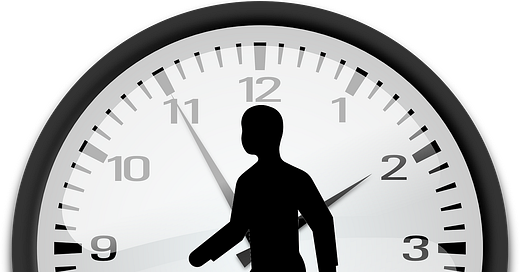Perhaps you’ve heard the (anti)productivity advice to choose your failures in advance. The basic idea is that rather than succumb to the feeling of productivity debt—that small twinge of guilt when you don’t get through everything on your to-do list—you can acknowledge ahead of time that there just aren’t enough hours in the day to get it all done, then pick the thing(s) that you may not complete.
Personally, I find this framework comforting and insightful, but I think it doesn’t go far enough—and is perhaps a bit simplistic. For a really important goal, after all, or a task where the consequences of not completing it will be high, total failure just isn’t an option. Put another way: If it’s ok to maybe not do something, why is it on my to-do list in the first place?
The way out of this conundrum for me has been not to choose what I’m going to totally “fail” at but what I’m ok doing a slightly shittier job on—and then box myself in accordingly. (To be fair, this may have been what the original advice meant the whole time, and I was being too literal about it?) The key update that boxing in adds is that you don’t just say, “I’m going to half-ass my workouts this month” or whatever; you still try to give everything 100% effort, but you sequence your day so that you have less time for the tasks where quality matters less.
Boxing in is useful because we are typically much more likely to underestimate how long a given task will take than overestimate it. (This is probably a good thing, by the way! If you were totally realistic about how many hours you were going to spend responding to those emails, and running to the grocery store, and reading that article your friend sent you, etc., you’d probably be pretty overwhelmed/bummed out.) For most of us, the unfortunate byproduct of these optimistic time estimates is that the lags tend to accrue throughout the day (or week, month, etc.), and we’re often forced to sacrifice on the activities that occur later—or (*shudder*) our sleep. The mechanism I’m proposing is simply to anticipate those lags and sequence accordingly.
(A natural corollary: If you do want to spend a lot of time on a given task, you should sequence/structure your day to promote immersion in it—e.g., spend the morning at a library or coffee shop.)
Note that while this box-in principle could fairly be labeled “prioritization,” it distinguishes between tasks that are high-priority to get done, and tasks that are high-priority to maximize performance on: Printing out one’s medical records could be very important, for example, but success depends on the mere click of a button; deciding whether or not to undergo surgery is a task worthy of careful consideration over an extended period of time.
Some tasks that we would readily admit belong to the first category (i.e., it matters that we do them, not how well) have a tendency to suck us in anyway. You’re writing an email to your boss, say, to ask if it’s ok to work from home tomorrow—something you’ve done in the past and know they are likely fine with. Theoretically, this should be a simple request, yet you find yourself fiddling with the wording (Is “Thanks,” too presumptuous? Does that semicolon make me sound pretentious?) even though you know it won’t really make a difference; maybe you’re even using this task as an excuse to procrastinate on another one. Suddenly, you look at the clock and realize you’ve spent 45 minutes crafting a total of three sentences—one of which is “Hope you’re well!” with an exclamation point you’ve swapped in and out five times before finally settling on your first impulse.
But if you instead slot in the drafting during the 10 minutes before you meet a friend for lunch, chances are this will be enough of a nudge to just fire the email off—right? (Scheduled meals and meetings are a great box-in method! Just leaving something till later in the day is usually a pretty good strategy, too.) Again, it’s not that this hypothetical email is unimportant (you can’t just not show up to the office without saying anything)—but its importance depends on your sending something, not the perfect wording.
Now, this box-in approach does still require a capacity for moderately accurate time estimates: Most tasks have a bit of give in how efficiently they can be completed, but that give isn’t infinite. (E.g., a final term paper can’t be squeezed into the last half hour before it’s due.) Boxing in also requires the good judgment to assess what it’s truly ok to sacrifice quality on. But I think the average person shouldn’t have too much trouble meeting these two requirements. Even if the box-in isn’t perfectly executed, it’s surely better than letting one’s schedule be dictated by the ever-shifting currents of attention and motivation.
I don’t mean to imply that boxing in is some brilliant productivity silver bullet that will ensure you never miss a goal. I’m also sympathetic to the idea that when a task is truly quick and finite (e.g., emptying the dishwasher, endorsing a check), maybe it’s wise to just knock it out and score an easy W. (This is sometimes known as the 2-minute rule: “If it takes less than two minutes, then do it now.”) I’ve just found this to be a useful organizing principle in my own life, and it helps keep me honest when I promise myself I’m not going to spend too much time on something.
TL;DR
#LifeHack 🤪 : Try sequencing your to-do list to “box yourself in”—i.e., leave yourself less time to complete tasks that might try to suck you in, but whose quality is actually less important.




You’ve got me thinking that maybe I can box in time first thing every morning to catch up on reading like the Elbow! Thanks!